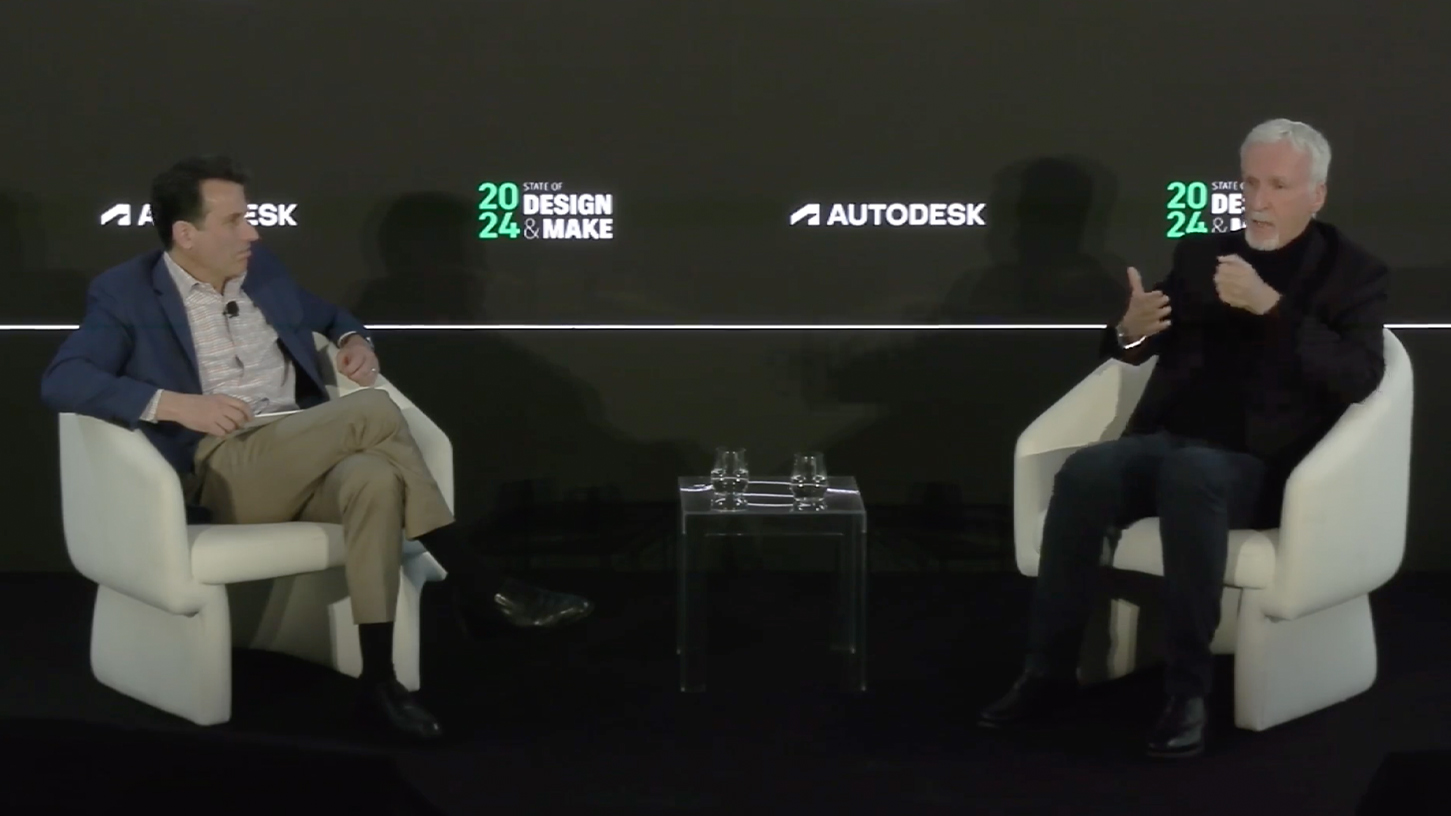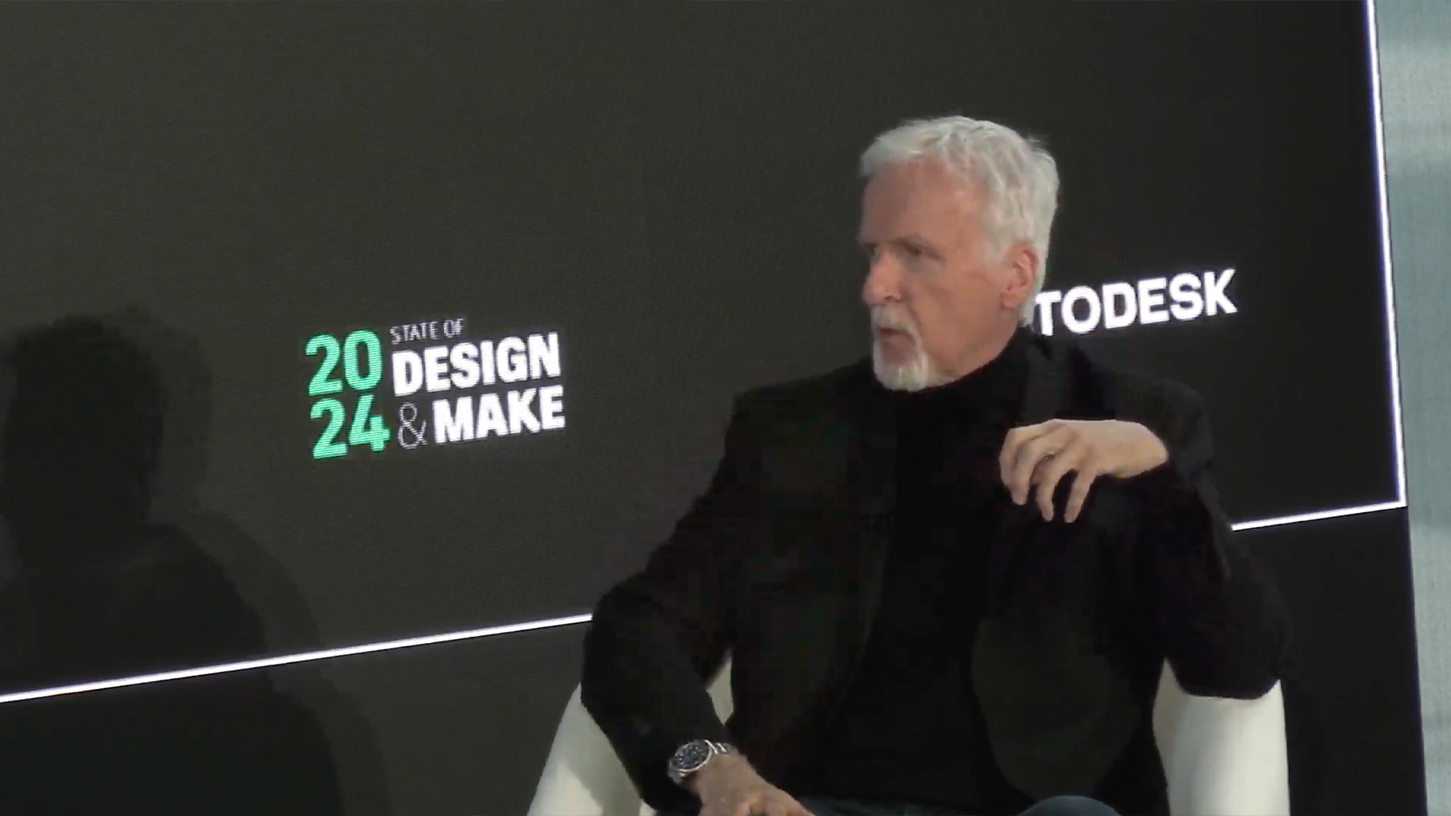
The Autodesk Beyond Boundaries talk with James Cameron has just finished and he told host Andrew Anagnost, CEO of Autodesk, "Only people that take risks are the ones that really achieve something" and he revealed how he believes filmmakers are in a technological race to not only match but beat the expectations of audiences.
Cameron talked about how he visions his films and scripts, and how artists and creatives need to think big and break down their work into 'fractals'. Here he said this is where AI can help, filling in the gaps to enable the larger picture to develop.
He said: "That's the vision, that's the thing you go after, but then as you go down levels of magnitude you see more and more patterns, and you realise that greater pattern, the grand pattern, is made up of all these kinds of fractal details that need to be there. And this is where I think AI can be helpful because it can fill in some of the some of those detail levels and allow us as artists to stay at a higher level."
AI can be helpful because it can fill in some of the some of those detail levels and allow us as artists to stay at a higher level
James Cameron
The Beyond Boundaries talk focused on how artists can make use of new technology to enable greater creativity. It was interesting to hear Cameron say "technical breakthroughs now are more iterative" now than "revolutionary" because the real innovation is happening "behind the scenes". Now Cameron says the real challenge is to make a film "cheaper, faster and more efficiently".

That's not to say Cameron isn't averse to pushing the artistic boundaries with new CGI technology. On Avatar he says the film's team "knew that the tools weren't good enough" so they invested in new physics based simulations for liquids, "and we cracked the code on a lot of things in CG water that had been elusive".
"New technology just volumetrically fills that expectation level, and it's so it's almost like an arms race between you and the and the audience's level of expectation and imagination," said Cameron, who is currently working on Avatar 3 and has developed new tools with Autodesk - the makers of Maya and 3ds Max - to bring his films to the screen.
New technology just volumetrically fills that expectation level, and it's so it's almost like an arms race between you and the and the audience's level of expectation
James Cameron
When asked further about his creative process and overcoming problems, Cameron shared a story of artistic block when writing the scripts for Avatar 2 and 3, he couldn't get past a story structure. He spent an hour looking at a fly hitting a window time again even though centimetres lower was a gap to fly through.
"I need to think at a higher level, I need to not be the fly," he said. "And I went back and I just stood way back and I thought about the essence of the story. What am I trying to do? And I I elevated my consciousness, you know, enough to see a completely new pattern, and I restructured both scripts completely in the space of just a few hours. And that's the version we're shooting on right now."
The message? "You have to imagine a different path. You've got to step way back. Because if you just keep bumping against that glass, you're never going to succeed."
If you want to discover more, read our interview with director Freddy Chávez Olmos who explains how AI was used to make horror film BYE-BYE. Love Avatar? Read my review of Avatar: Frontiers of Pandora.







